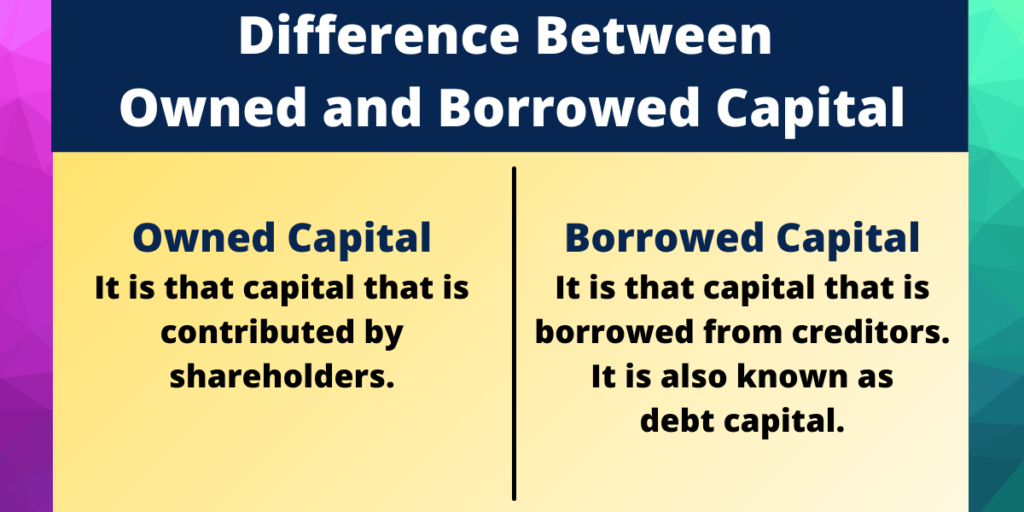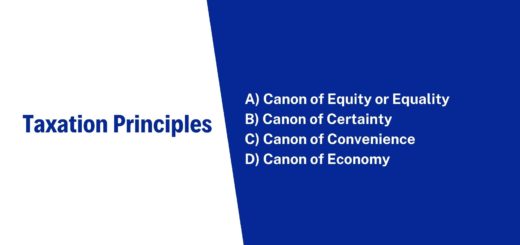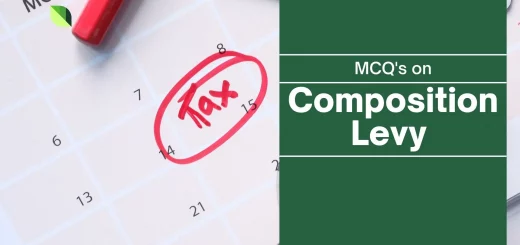Difference Between Owned Capital and Borrowed Capital (7 Points)
Table of Contents
Difference Between Owned Capital and Borrowed Capital
Owned Capital
Meaning of Owned Capital:
The capital raised by the company with the help of owners (shareholders) is called owned capital or ownership capital. The shareholders purchase shares of the company and supply necessary capital. It is one form of owned capital.
Another form of owned capital is retained earnings. It is also known as ploughing back of profit. It is a reinvestment of profit in the business b the company itself. Retained earnings are an internal source of finance.
Owned capital is regarded as permanent capital, as it is returned only at the time of winding up of the company.
Owned capital in the form of share capital, provides an initial source of capital for a new company. It can be raised a time later to satisfy the additional capital needs of a company. However, retained earnings cannot be an initial source of capital but it can be an important source of capital when a company runs its business profitably during its existence.
Promoters decide the share capital required b a company. This amount of share capital is known as authorized capital. It is stated in the Capital clause of the Memorandum of Association of the company. Let us learn in detail the various sources of owned capital.

Borrowed Capital
Meaning of Borrowed Capital:
Only owned capital is not sufficient to carry on all business activities of a joint stock company. A company needs borrowed capital to supplement its owned capital.
Every trading company is entitled to borrow money. However, it is a normal practice to have an express provision in the Memorandum of Association, enabling a company to borrow money. Memorandum authorizes company to exercise borrowing powers whereas Articles of Association provides as to how and b whom these powers shall be exercised.
The power to borrow money is normally exercised by the Board of Directors of the company.
A private company may exercise its borrowing powers immediately after incorporation. However, the public company cannot exercise its borrowing power until it secures a certificate of commencement of business.
The capital may be borrowed for short, medium, or long term requirements. It is better to raise borrowed capital at a later stage of a company’s business when a company wants to expand or diversify its business and it requires additional capital. This additional capital can be raised by :
a) issue of debentures b) Accepting deposits c) bonds d) Loans from commercial banks and financial institutions, etc. Interest is paid on borrowed capital. It is paid at a fixed rate. Borrowed capital is repayable after a specific period of time.
- Difference Between Fixed Capital and Working Capital
- Difference Between Owned Capital and Borrowed Capital
- Difference Between Debenture and Share
- Difference Between Preference Shares and Equity Shares
Difference Between Owned Capital and Borrowed Capital
| Points | Owned capital | Borrowed capital |
| 1) Meaning | It is that capital that is contributed by shareholders. | It is that capital that is borrowed from creditors. It is also known as debt capital. |
| 2) Sources | This capital is collected by issue of equity shares and preference shares. | It is collected by way of issue of debentures, fixed deposits, loan from bank/financial institutions, etc. |
| 3) Return on Investment | The shareholders get dividends as income on their investments. Rate of dividend is fluctuating in case of equity shares but fixed in case of preference shares. | The debt capital holders get interest as income on their investment. Interest is paid at a fixed rate. |
| 4) Status | The shareholders are owners of the company. | The debt holders are creditors of the company. |
| 5) Voting right | The equity shareholders enjoy normal voting right at the general meeting. | The creditors do not enjoy voting rights at the general meeting. |
| 6) Repayment of Capital | The shareholders do not enjoy priority over creditors. They are eligible for repayment of Capital only after making payment to creditors at the time of winding up of the company. | The creditors get priority over the shareholders in case of return of principal amount at the time of winding up of the company. |
| 7) Charge on assets | The shareholders do not have any charge on the assets of the company. | The secured debenture holders have a charge on assets of the company. |


